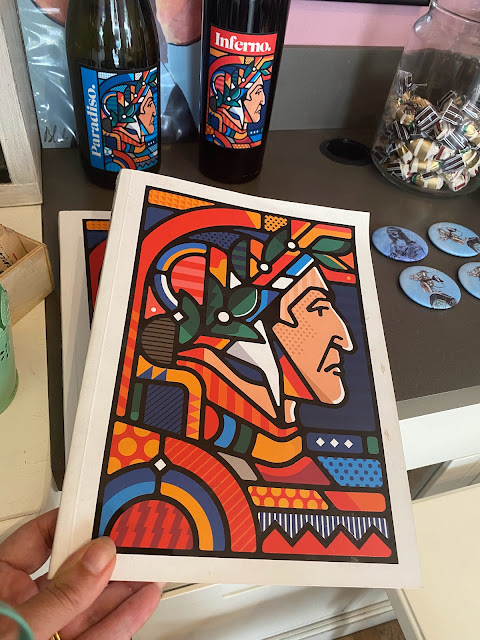Ravenna is mostly famous for its stunning 5th and 6th century mosaics (many in Unesco sites around the city), but it is also considered Dante's city (Dante died in Ravenna) as much as Florence (where Dante was born) is.
Dante is omnipresent in Ravenna, the city where he lived the last years of his life. in 2021 the city celebrated the 700th anniversary of his death with many artistic and cultural initiatives, which are still active today. Also, along the city streets, there are several interactive tags with verses from the Divine Comedy.
When Dante died in Ravenna, in 1321, his tomb was a simple sarcophagus just outside the Church of San Francesco. Then Guido Novello da Polenta, lord of Ravenna, asked for the construction of a chapel just for Dante's Tomb. In 1483, Bernardo Bembo, who ruled the city on account of the Republic of Venice, decided to restore the sarcophagus and commissioned the sculptor Pietro Lombardo a marble bass relief portraying Dante’s face, visible today inside Dante's Mausoleum.
 |
| Dante's Tomb in Ravenna |
Dante's spoils have been contended between Ravenna and Florence for a long time, and between the 16th and the 18th century, the remains went missing, hidden by the Franciscan friars in a small wooden chest, so that Florence couldn’t get them.
The current mausoleum was built between 1780 and 1782. It was ordered by Cardinal Luigi Valenti Gonzaga (1725 – 1808) and designed by the Ravenna architect Camillo Morigia (1743-1795), who created a little Neoclassical temple made of simple lines and sombre decorations. The rests were recovered and placed in the new mausoleum until 1810, when Napoleon ordered the confiscation of monastic property, and the friars were forced to leave, but first they made sure to hide again the chest with the remains.
 |
The majestic oak next to the mausoleum was planted by poet Giosuè Carducci at the beginning of the 20th century. The Mausoleum's doors close in the evening.
|
On May 25th 1865, during some maintenance works at the monastery beside the tomb, a bricklayer accidentally found a wooden chest in a wall of the Quadrarco di Braccioforte. Luckily, a young student, Anastasio Matteuggi, saved the box from destruction.
The chest had a script saying “Dantis ossa a me Fra Antonio Sancti hic posita anno 1677 die 18 octobris”, which means “These bones of Dante placed by me on the date of 18 October 1677”. It was the original wooden chest where the friars kept the Poet's remains.
On that occasion, the remains were reassembled and put on display in a crystal urn for a few months. The crystal urn, without glass, is now displayed in the Dante Museum (see photo below), and so is the Franciscan friars' wooden chest.
 |
| The crystal urn, without glass, where Dante's remains were reassembled and put on display |
for a few months in 1865
Since then, besides the transfers that occurred during the Second World War in order to avoid destruction, (see photo below) the spoils haven’t been moved again.

 |
| The mausoleum with open doors. |
Near the Tomb there is the Dante Museum and Dante House. The museum features several rooms with relics and historical objects, and modern and engaging multimedia rooms about the Poet's life, legacy, and work (especially the Divine Comedy).
 |
| Our Dante Auckland member Alessandra in one of the multimedia rooms at the Dante Museum in Ravenna |
After touring the Museum you can check out the library (in the same building) which holds everything that has been written by and about Dante, including some very ancient tomes.
Near the Museum, and accessible with the same ticket, there is Casa Dante, hosting art pieces about Dante and the Divine Comedy. This includes a long-term exhibition with some very important works loaned by the Uffizi Galleries in Florence: check out this painting of star crossed lovers Paolo and Francesca!


For more Dante's experiences in Ravenna visit this site https://www.turismo.ra.it/en/follow-your-way/dante-alighieri/














